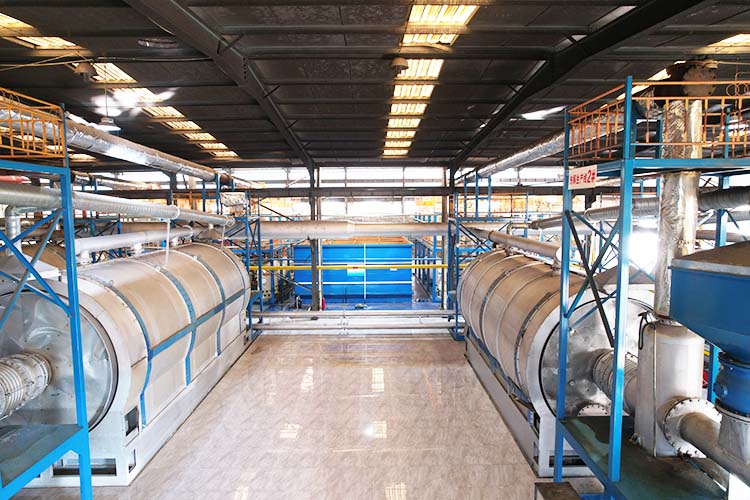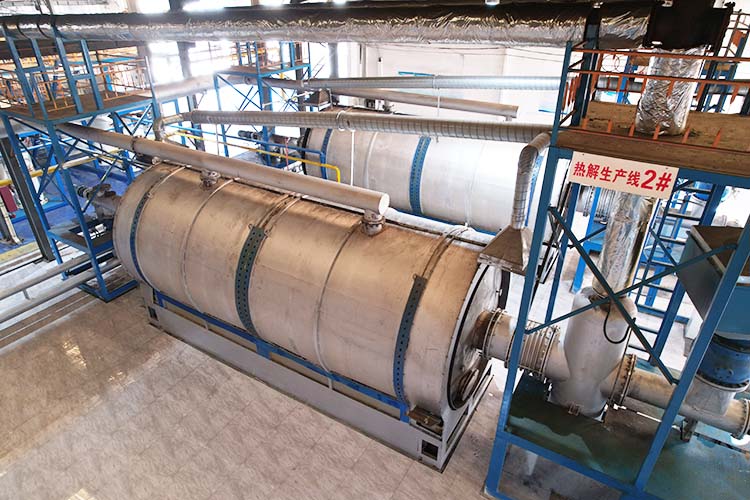In the process of sustainable development of environmental protection industry, Henan Yongle Group, as a professional third-party organic solid waste solution provider, is injecting new momentum into industry development by virtue of technological innovation. The enterprise covers many fields such as technical development of environmental remediation engineering, equipment manufacturing, investment, construction and operation of environmental engineering and technical consultation, and always focuses on the R&D, production and sales of complete technical equipment for organic solid waste treatment and comprehensive utilization. The high-temperature pyrolysis furnace developed by the enterprise has become an important equipment in the field of organic waste treatment.

High-temperature pyrolysis furnaces are distinguished by their unique design concept and treatment process. As an equipment specially built for pyrolysis treatment, it can complete the conversion process of organic waste under specific environment. In the pyrolysis reactor of the equipment, organic waste undergoes thermal decomposition reaction under high temperature and oxygen deficit or low oxygen conditions. This treatment method avoids the secondary pollution problems that may be caused by traditional incineration from the source, so that organic substances can complete chemical conversion in a controllable environment.
Another significant advantage of high temperature pyrolysis furnaces is the wide range of application scenarios. It can adapt to the treatment requirements of different types of organic wastes and provide solutions for multiple waste treatment. Ordinary organic solid wastes produced in industrial production, domestic wastes produced in daily urban life and sludge produced in municipal sewage treatment can be effectively treated harmlessly, reduced and stabilized through this equipment.

High-temperature pyrolysis furnaces also play an important role for special organic wastes with more complex compositions. In the face of organic hazardous wastes, medical wastes and other wastes difficult to be treated, as well as common agricultural and forestry straws in agricultural production, the equipment realizes effective management and control of hazardous substances through scientific treatment process to ensure that all kinds of organic wastes can be properly treated.
High-temperature pyrolysis furnaces show significant value in terms of resource utilization. With the help of the self-developed low temperature oxygen-apyrolysis technology scheme, the equipment converts the organic wastes that are difficult to be treated into energy or chemical products with utilization value, so as to complete the transformation of resource attributes during the treatment process and realize the treatment objective of "turning waste into wealth".

This treatment mode not only effectively relieves the environmental pressure caused by organic wastes, but also opens up a new path for energy and resource supply. It organically combines the environmental protection concept with the resource utilization, reflects the concept of sustainable development, provides a practical direction for the organic waste treatment industry, and promotes the industry to develop more efficiently and more environmentally friendly.
Yongle Environmental Protection is mainly engaged in the research and development, production and sales of complete sets of technical equipment for organic solid waste disposal and comprehensive utilization. Production and manufacturing, domestic waste treatment equipment, tire pyrolysis equipment, medical waste disposal equipment, hazardous waste disposal equipment, and achieve efficient and comprehensive utilization of resources through independently developed low-temperature anaerobic pyrolysis equipment technology solutions.
Tags:The high-temperature pyrolysis furnace activates the new value of solid waste resources,High temperature pyrolysis incinerator,YONGLE GROUP
 Latest news
Latest news


























